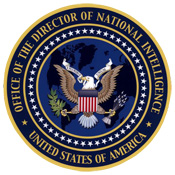
As with other fields such as medicine, after years of massive costs and sometimes ineffective methods, resulting in catastrophic failures such as 9/11, new leadership at our intelligence agencies such as Director of National Intelligence James R. Clapper are adopting digital and social science methods such as crowd sourcing, data science, knowledge management. Social scientists have found that combining many people’s predictions — even if they are not experts — usually yields better results than any single person’s judgment. With 200,000 people in its direct employ, and nearly 1 million outsiders holding security clearances, the US intelligence network would seem to be a perfect place to take advantage of the wisdom of the herd — except that so many of these people work in compartmentalized and secretive units. To solve this problem, IARPA is awarding grants to teams of social scientists to craft the best approaches to pooling multiple sources of intelligence analysis, generating more accurate predictions than individual departments might manage on their own.
The examined spy – Boston.com.

Related articles
- How To Crowd Source Your Dream Cycle Tour (essentialtravel.co.uk)
- Online Social Science: Can the Web Graduate from Digital Petri Dish to Virtual Laboratory? (scientificamerican.com)

You must be logged in to post a comment.